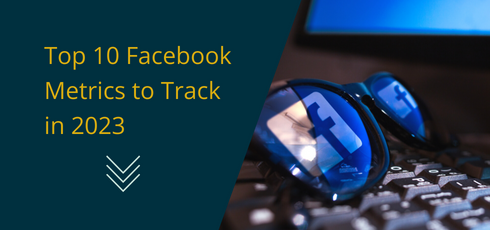1. ROAS (Return On Ad Spend):
ROAS (Return On Ad Spend) in Facebook Ads shows the amount of revenue that is earned for every dollar spent on a campaign. (Here’s the formula for this metric: ROAS = (revenue attributable to ads / cost of ads) x 100)
This metric will tell you whether your campaigns are profitable or not and one of the metrics you definitely need to, however with the iOS privacy changes and other issues, the tracking of this metric inside the Facebook Ads Manager may not be accurate.
For example, your Facebook Ads Manager may show a lower ROAS than you normally get, because the conversions coming from the ads did not get tracked on iOS devices as users turn off the tracking.
So, my recommendation is to not rely fully on what you see inside your Facebook Ads Manager account, but also combine data from other sources like your own website backend to track the sales overall for that period, HotJar and also Google Analytics data.
Then, try to make sense of all the data you collect from these sources to make decisions.
Quick Hint: What you also can do is to test things by creating dedicated landing pages for ONLY Facebook ads, so you know that the sales that came from those landing pages are only from Facebook ads.
2. Link Click-Through Rate (Link CTR)
This is the metric that shows how many people clicked your ad to go to your website or landing page. Just to make it clear, this link CTR is different than CTR (All) which includes clicks to likes, comments, shares… Link CTR is the one that ONLY tracks clicks to the links in your ad.
It’s important to track this metric because it will help you understand if your ad is getting a good rate of link clicks to your landing page. The average link CTR changes from industry to industry, but I’d say it should be at least 1%.
If your link CTR is lower than this, you may want to check multiple reasons—it may be due to targeting the wrong audience, showing a creative that is not resonating with your audience, having a very low budget…or all of the above. Test each one individually to see if this metric is improving.
3. Link Clicks:
The “Link Clicks” metric in Facebook Ads means the number of clicks you’re getting to the ad links that take you to off-Facebook destinations like; your website, landing page…or on-Facebook experiences like; Facebook lead-gen forms and other places on Meta.
It’s important to know how many clicks you’re getting for your ads in a given amount of time and budget—because it’ll show you the performance change on your ads.
For example, you’re having the same budget for a new campaign but this time, the number of clicks you’re getting has gone down, so you need to know why. This may be due to various reasons like; the click-through rate (CTR) may have gone down or the cost of ads may have gone up even though the CTR has stayed the same or even gone up.
4. Cost Per Link Click:
Cost Per Inline Link Click is the average amount of money you spent per click on the links you used in your ads. It’s calculated by dividing the total amount of money spent on ads by the total number of clicks on links within the ads.
Remember, these clicks have to be “Link Clicks”, not other links such as; “Like”, “Comment”, “Share”, “Read more”…
You should be following the cost of your link clicks to see if they are above your industry standards, getting lower or increasing. The average cost per link click varies from industry to industry, however, overall industries, the average cost per link click is $1.72, according to a study of Facebook Ad benchmarks in 2020.
5. Cost Per 1000 Impressions (CPM):
CPM stands for “Cost Per Mille” (Did you know that “Mille” means 1000 in Latin?) and this metric shows the amount of money you spent to get 1000 impressions on your Facebook ad.
This metric may get overlooked most of the time, but it’s, on the contrary, one of the most important metrics you should be tracking, because it tells you how much you’re spending to get your ads in front of people.
Imagine your CPM was $10 a year ago, and now your CPM is $20,and you’re getting lower conversions on your ads for the same amount of budget and CTR. You may think that your ads are not working, but in fact, the amount of money you need to spend to get in front of the same amount of people just went up in a year. This may happen due to more advertisers in the game.
While evaluating your ads performance, it’s crucial that you check your CPM and make decisions by comparing it to the previous campaigns, along with the rest of the other metrics.
6. Reach:
Reach on Facebook ads measures the number of unique people who have seen your ad.
Reach is different from “Impressions” because impressions count the number of times your ad is seen and that may include the same people seeing your ad multiple times.
When you try to understand how many people have seen your ad within a specific time period and the given budget, you should check your “Reach” metric inside Facebook Ads Manager.
This metric leads us to another metric you should also be checking:
7. Frequency:
“Frequency” metric inside Ads Manager shows the average number of times each person saw your ad.
If you don’t want to show your ads to the same people over and over again, to lead to ad fatigue and create bad experience for your audience, you should definitely keep a close eye on this metric.
For example, let’s say, your frequency is 10, meaning one person in your audience have seen your ad 10 TIMES. Do you think this ad would be seen positively by that person? No! If they haven’t taken an action on that ad or even if they have and you still keep showing the same ad instead of taking them into a different phase in your ad funnel, then what you’re doing is wasting your money and causing an annoying feeling for your audience.
Instead, what you can do is if your frequency reaches a certain cap, I’d say 4-5, then I’d recommend showing them another ad to the same audience. And definitely exclude the ones who take the action you want them to take.
8. Video Views:
If you’re running a campaign with a video view objective or any campaign with a video ad, it’s important to track the number of video views you get on those videos.
There are different metrics inside Facebook Ads Manager that shows the percentages of your videos watched. The people who watched at least a certain percentage of your videos are so valuable for you because you can retarget them again with your ads as a warm audience.
I normally take the ones who watched at least 25% of the videos, because especially for videos of 45 sec. and above, this means they’ve shown interest in your content, products and services. Then, I prepare another campaign to retarget them differently depending on the content they consumed and this makes a really powerful campaign for conversions.
9. Cost Per Lead (CPL):
Cost per lead (CPL) is the amount of money you’re paying to acquire each lead you generate from a Facebook ad. CPL is calculated by dividing your spend by leads generated on your Facebook campaigns.
This metric is one of the key metrics you need to be tracking if you’re running any kind of lead generation ads, whether it’s a lead-gen form campaign or a campaign with a landing page that includes a lead-gen form.
The key to getting the cost per lead lower is to test different creatives, audience, ad copy, placements…and in order to understand the results of your tests, you need to track your CPL properly and consistently.
10. Cost Per Purchase/Acquisition:
It may seem obvious to say that Cost Per Purchase or Cost Per Acquisition is one of the most important metrics to track but it may be really surprising to see how much this metric can still be unknown by many business owners.
Knowing your ideal & maximum cost per acquisition and then checking where your actual CPA is compared to your ideal situation tells you how you’re doing in terms of your performance and when is time to take action on your ads.
Conclusion:
If you’re advertising on Facebook, a very important part of your advertising has to be tracking metrics and data. The top 10 metrics I’d recommend you to track closely and make decisions off of them.
And I’m not talking about just collecting data here—it’s the easiest part as Facebook Ads Manager, Google Analytics and many other tools can do that for you.
What I’m referring to here is to evaluate and use the data you collect to make data-driven decisions. Only then will you get to optimize your campaigns successfully and scale them up.
If you need help with your Facebook advertising, want me to help scale your ads to where you dream of, feel free to reach out to me here or DM me on Instagram.


